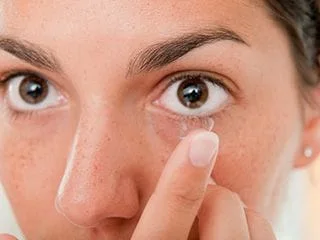
Contact lenses are not an easy solution for every person suffering with vision problems. Some eye conditions make wearing contacts a difficult proposition. However, it does not rule out wearing contact lenses altogether. It just means patients need to discuss options with their eye care provider and obtain specialized hard to fit contacts for their specific vision problems.
Reasons for Hard to Fit Contacts
Finding contact lenses that fit and wearing contact lenses in general can be made more challenging when these conditions affect your eyes:
- Astigmatism
- Dry eyes
- Giant Papillary Conjunctivitis (GPC)
- Keratoconus
- Presbyopia
Astigmatism: Astigmatism develops when the front of the eye curves into a bulge or oval shape. It causes blurred vision and can be difficult to correct because regular contacts cannot account for the bulging.
Dry Eyes: When eyes become excessively dry, it leads to irritation, burning, redness, and blurred vision. Contact lenses can exacerbate these conditions by making it feel like a foreign object is stuck in your eye.
Giant Papillary Conjunctivitis (GPC): This form of conjunctivitis is caused by inflammation on the inner surface of the eyelid. Protein buildup on contact lenses can make this condition worse.
Keratoconus: This is an uncommon condition that causes major discomfort when wearing contacts. Keratoconus happens when the cornea becomes thinner and allows the eye to bulge forward. The bulge forms into a cone shape.
Presbyopia: Eyes tend to have a tougher time focusing on close objects as they age. This condition is known as presbyopia. It typically affects people ages 40 or older.
Solutions for Hard to Fit Contacts
Wearing contacts is not impossible if you suffer from one of the above conditions. You do need to meet with an eye care professional and get prescribed contact lenses that are tailored to deal with your specific vision condition.
Gas permeable (GP) lenses are a good solution for patients who suffer from GPC or Keratoconus. A gas permeable lens will limit protein deposits from accumulating, which will reduce GPC symptoms. Gas Permeable lenses are also effective in containing corneal bulging and relieving pressure on the tissue, making them an ideal solution for those with Keratoconus.
Toric lenses are useful for correcting astigmatism. Toric lenses need to precisely align with the exact bulges of the cornea. In order to ensure a proper fit, toric lenses should not rotate on the eye. They are typically custom made to correct a specific astigmatism. For that reason, this type of lens takes longer to make and costs more than a traditional contact lens.
Bifocal and multifocal lenses can help remedy presbyopia. Monovision lenses are another option for presbyopia. Monovision contact lenses correct one eye for distance vision and the other eye for near vision.
Medicated eye drops can be an effective solution for dealing with dry eyes. They will lubricate eyes enough to make contact lenses more bearable. In extreme cases of dry eye, a punctal occlusion might be performed in order to plug the ducts and better lubricate the eyes. GPC symptoms can also be lessened through medicated eye drops. These drops flush out protein deposits and reduce inflammation.

